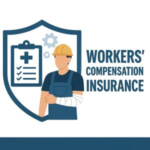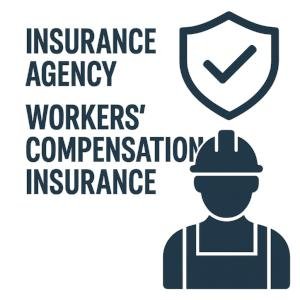
*
In today’s competitive insurance landscape, businesses are increasingly seeking innovative ways to optimize their workers’ compensation costs. Experience Modification (Experience Mod) predictive tools have emerged as a vital resource, empowering organizations to accurately forecast potential savings and identify strategic opportunities for risk management improvements. by leveraging advanced data analytics and past loss information, these tools provide a forward-looking outlook that enables companies to proactively manage their experience mod ratings. This article explores how Experience Mod predictive tools can serve as a powerful ally in unlocking cost savings, enhancing operational efficiency, and driving informed decision-making in risk management strategies.
Table of Contents
Modern predictive tools for Experience Modification Rates (EMR) empower organizations to take a proactive approach in risk management by analyzing vast amounts of historical claims data and operational patterns.These advanced analytics platforms leverage machine learning algorithms to pinpoint underlying risk factors before they escalate into costly incidents, enabling businesses to tailor safety programs that reduce workplace injuries and, subsequently, insurance premiums.By integrating predictive insights with everyday safety operations, companies can transform customary reactive measures into strategic foresight, resulting in improved employee well-being and significant cost containment.
Key benefits of utilizing Experience Mod predictive tools include:
- Identifying hidden risk trends that are not visible through manual analysis
- Forecasting potential claim frequencies and severities to optimize insurance budgeting
- Customizing intervention strategies based on data-driven risk profiles
- Enhancing clarity in risk communication with stakeholders and insurers
| Aspect |
Traditional Approach |
Predictive Tool Advantage |
| Risk Identification |
Reactive, after incidents occur |
Proactive, preemptive flagging of hazards |
| Claims Forecasting |
Historical averages, limited precision |
Dynamic projections based on multiple variables |
| cost Savings |
Indirect and inconsistent |
Direct correlation through targeted actions |
Analyzing Data Trends to Identify Savings Opportunities
Leveraging advanced predictive analytics allows businesses to dive deep into historical data patterns, uncovering hidden cost-saving opportunities before they become apparent through traditional methods.By examining key metrics such as claim frequency, severity, and loss development over time, organizations can anticipate spikes or reductions in expenses. This proactive approach ensures targeted interventions, optimizing resource allocation and enhancing overall financial performance. Predictive tools not only highlight trends but also quantify their potential impact on your experience modification rate (EMR), offering a clear roadmap for risk mitigation and operational efficiency.
- Identify recurring high-risk areas: Pinpoint departments or activities driving claims and prioritize betterment strategies.
- Detect seasonal or cyclical fluctuations: Prepare budgets and staffing levels aligned with predictable cost variances.
- Forecast long-term cost trajectories: Support strategic planning with reliable projections of experience mod changes.
| Data Trend |
Insight |
Potential savings |
| increased minor claims |
Improve safety training and PPE enforcement |
15% reduction in claims costs |
| Spike in seasonal injuries (Q3) |
Seasonal awareness campaigns and adjusted workloads |
10% fewer downtime days |
| High claim severity in equipment handling |
Invest in enhanced equipment maintenance programs |
20% lower EMR impact |
Integrating Predictive Insights into Strategic Decision Making
Leveraging predictive insights transforms strategic decision-making by enabling organizations to anticipate market shifts and identify cost-saving potentials before they arise. By integrating advanced analytics into routine processes, teams gain a data-driven perspective that supports proactive rather than reactive moves.This approach enhances accuracy in budget forecasting and resource allocation,allowing companies to capitalize on opportunities that traditional methods might overlook.
Key benefits include:
- Enhanced Risk Management: Predictive data highlights potential risks, helping decision-makers to mitigate financial leakage.
- Optimized Pricing Strategies: Real-time insights guide competitive yet profitable pricing models.
- Improved Operational Efficiency: Identifying underperforming areas allows for targeted process improvements.
| Predictive Metric |
Strategic Impact |
Potential savings |
| Forecasted Claim Frequency |
Adjust underwriting criteria |
$150,000/year |
| Cost Trend Analysis |
Negotiate supplier contracts |
$90,000/year |
| Customer behavior Patterns |
Tailor retention strategies |
$120,000/year |
Leveraging experience modification predictive tools effectively begins with data accuracy and consistency. Ensure that all relevant claim,payroll,and loss history data are up to date and meticulously verified. Utilizing clean data sets guarantees that the model outputs are reliable and actionable. Additionally, involve key stakeholders such as risk managers and safety officers early in the process to interpret predictive insights and align cost-reduction strategies with organizational risk tolerance and operational realities.
Implementing predictive tools is not a one-time effort but a dynamic process.Regularly monitor and adjust your approach based on real-time feedback and evolving trends in your loss experience.Best practices include:
- Continuous Training: Empower your team with ongoing education on new predictive analytics capabilities and updates.
- Scenario Analysis: Run multiple cost-saving scenarios to identify the most effective interventions.
- Cross-Functional Collaboration: Facilitate communication between underwriting, safety, and finance departments to synchronize actions based on predictive outcomes.
Establishing a disciplined framework around these strategies elevates your ability to forecast accurately and maximize savings.
Q&A
Q&A: Experience Mod Predictive Tools - forecast Savings Opportunities
Q1: what are Experience Mod Predictive Tools?
A1: Experience Mod predictive Tools are advanced software solutions that utilize historical workers’ compensation data and claims history to forecast a company’s experience Modification Factor (Mod). This factor influences workers’ compensation insurance premiums,reflecting a company’s safety record relative to industry peers.
Q2: Why is forecasting the Experience Modification Factor vital for businesses?
A2: Accurately forecasting the Experience Mod enables businesses to identify potential savings opportunities by proactively managing workplace safety and claims. It helps companies anticipate premium changes, allocate resources effectively, and implement targeted risk management strategies to reduce costs.
Q3: How do Experience Mod Predictive Tools work?
A3: These tools analyze past claims data, loss trends, and operational metrics using predictive analytics and machine learning algorithms.By assessing factors influencing risk, they generate projections of future Experience Mod scores, allowing businesses to visualize potential changes before they occur.
Q4: What are the key benefits of using Experience Mod Predictive Tools?
A4: Key benefits include:
- Improved accuracy in forecasting workers’ compensation costs.
- Early identification of risk areas and potential claims.
- Enhanced decision-making regarding safety programs and claims management.
- Chance to optimize insurance premiums by proactively addressing loss drivers.
- Better budgeting and financial planning related to insurance expenses.
Q5: Who can benefit the most from implementing these predictive tools?
A5: Employers of all sizes, insurance brokers, risk managers, and safety professionals can benefit. Particularly, companies with significant workers’ compensation exposure or those looking to optimize safety investments and reduce insurance costs will find these tools valuable.
Q6: Are there any limitations to Experience Mod Predictive Tools?
A6: While highly effective, these tools rely on the accuracy and completeness of historical data.Unexpected changes in operations, regulations, or claim trends can affect forecast accuracy. Thus, predictive insights should complement, not replace, professional risk management judgment.Q7: How can companies get started with Experience Mod Predictive Tools?
A7: Companies should begin by reviewing their current claims data and working with insurance partners or technology providers specializing in predictive analytics. Integrating these tools into existing risk management frameworks and fostering collaboration across safety,HR,and finance teams will maximize their effectiveness.
Q8: What is the future outlook for Experience Mod Predictive Tools?
A8: With continuous advancements in data analytics and AI, Experience Mod Predictive Tools are expected to become more complex, offering real-time insights and personalized recommendations. This evolution will further empower businesses to reduce workplace injuries, improve safety culture, and achieve measurable cost savings.
Key takeaways
leveraging Experience Mod predictive tools offers businesses a powerful avenue to anticipate and capitalize on savings opportunities within their workers’ compensation programs.By utilizing advanced data analytics and forecasting techniques, organizations can proactively manage risk, optimize safety initiatives, and drive more informed decision-making. Embracing these predictive capabilities not only enhances financial performance but also fosters a culture of continuous improvement and resilience. As the competitive landscape evolves, companies equipped with such tools are better positioned to achieve sustainable cost reductions and strengthen their overall operational efficiency.
“This content was generated with the assistance of artificial intelligence. While we strive for accuracy, AI-generated content may not always reflect the most current information or professional advice. Users are encouraged to independently verify critical information and, where appropriate, consult with qualified professionals, lawyers, state statutes and regulations & NCCI rules & manuals before making decisions based on this content.









